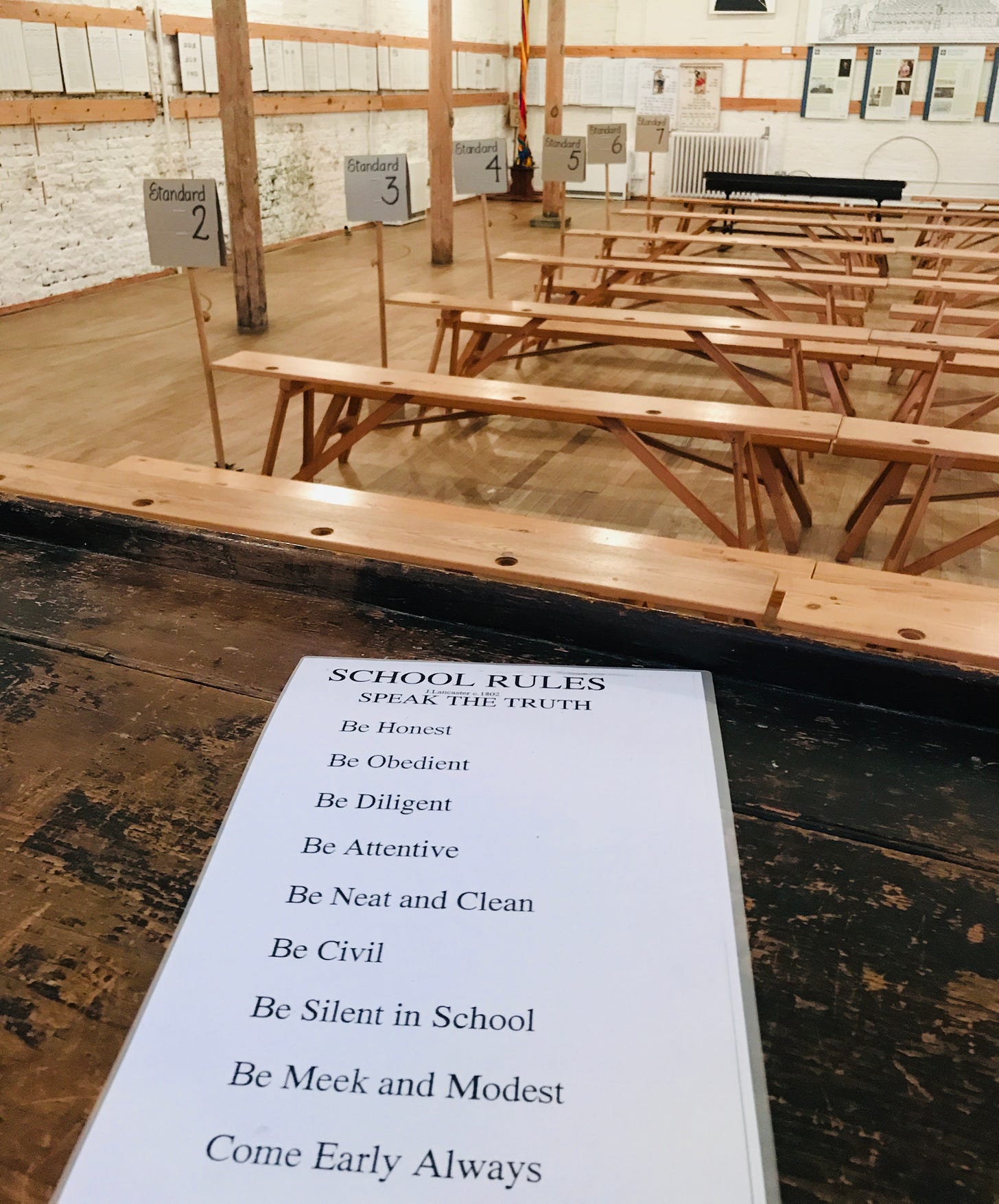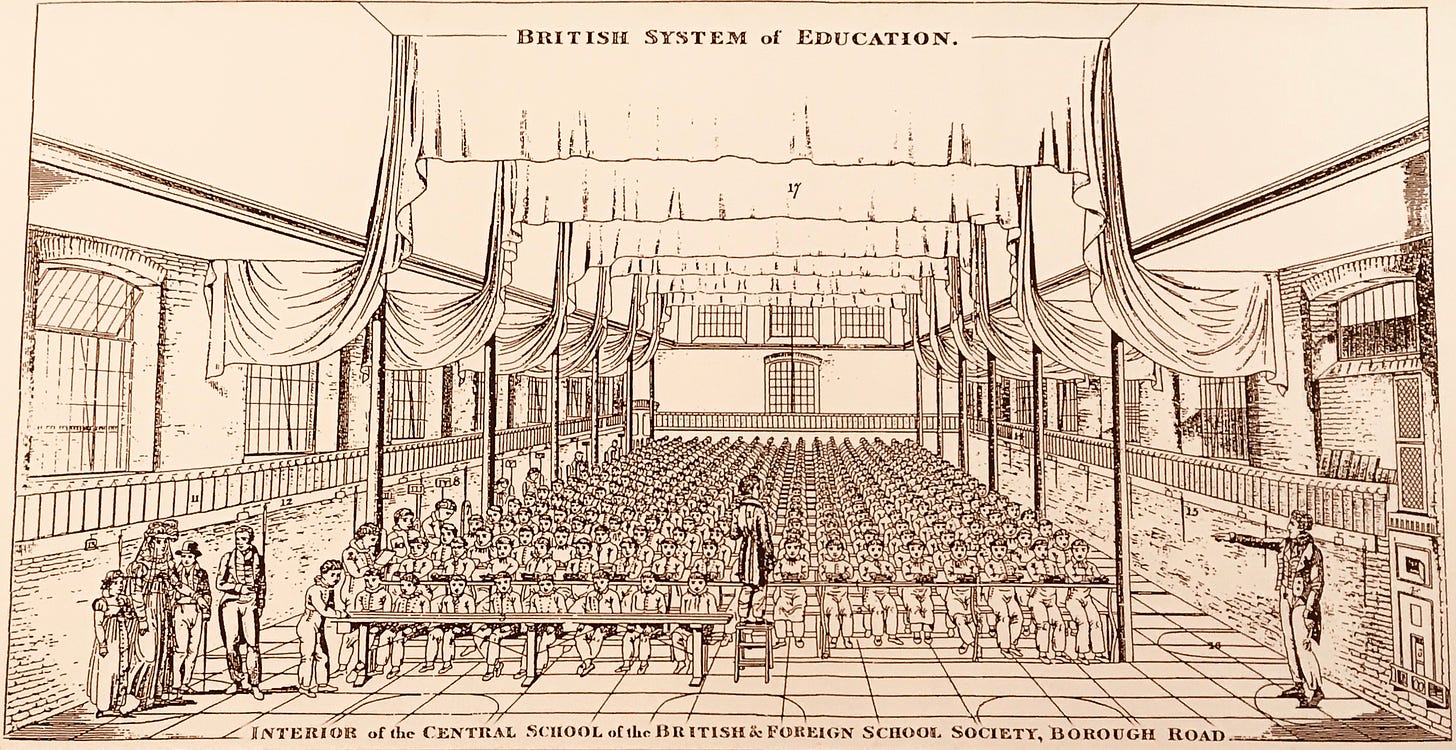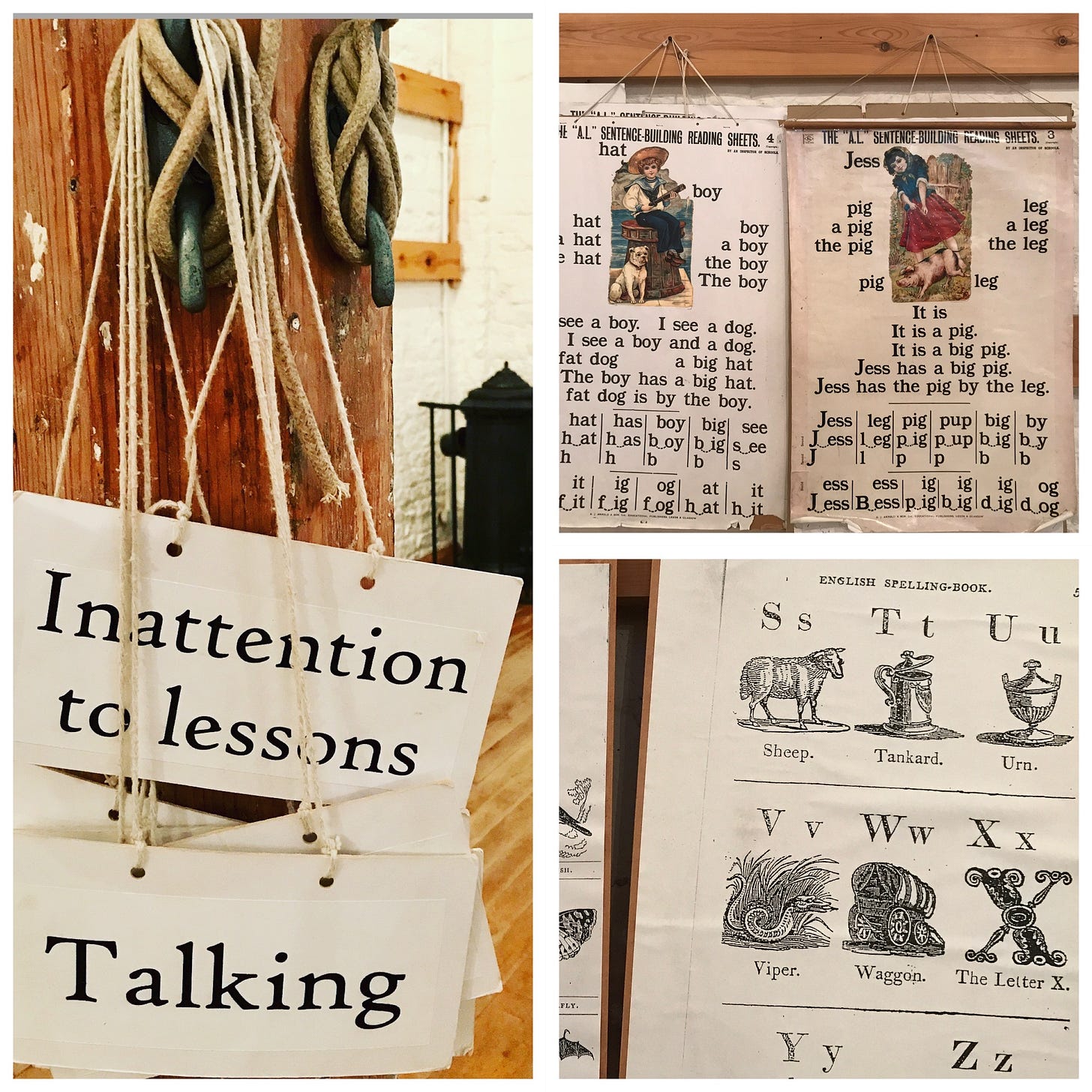One Master, three books and 300 Boys
“thanks to my friends for their care in my breeding, who taught me betimes to love working and reading.”
The Chilterns has its fair share of bonkers places to visit and extraordinary experiences. Most are quietly under the radar and unless you live on the same street, that is where they will probably remain.
A Maverick
Joseph Lancaster (1778 - 1838) was a Quaker, maverick and educational innovator, at odds with his peers about how children could be educated. In a time when universal education did not exist, but a belief that education could damage the ‘natural social order’ did, children as young as six were sent to factories, workshops or into domestic service in the vague hope that they would one day be able to support themselves and future dependents. In 1798. Joseph Lancaster introduced a system that meant cheap, basic education could be delivered to large numbers of children. He described his system as to produce a “Christian education” and “to train children in the practice of such moral habits as are conducive to the welfare of society.”
Excerpt from Moral Songs –
“A little more sleep and little more slumber” thus he wastes half his days and his hours without number..
“Here’s a lesson for me, but thanks to my friends for their care in my breeding, who taught me betimes to love working and reading.”
The British Schools Museum is located on Queen street in Hitchin town centre, a prosperous market town in Hertfordshire. Within the former Edwardian and Victorian school premises, you will find a number of buildings set close together. Near the site of former slums, whose young occupants would surely have attended the school, their dwellings in stark contrast with the outsized St Mary’s church, on the opposite banks of the river Hicca – a bold statement from a town doing well on wool.
This Monitorial schoolroom was built in 1837 and though only partly restored, has both preserved and presented this forgotten world very well. This is the only example left in the world in fact. I had never seen anything like it!
A Master
One master with his three books to teach 300 boys, assisted by 30 monitors by the Lancasterian method. The boys sat facing the master on benches at narrow desks and were also taught by the monitors at semi-circular teaching stations around the walls. It was at these stations where the books were divided up for lessons. The masters desk is the focal point with the long sand tray where students would be practising and learning their handwriting, right under his nose. It must have been quite something to keep 300 boys of varying ages focused on their school work.
By 1900, 700 children were packed into the school, and three more classrooms were added. The desks, displays and teaching implements now familiar to me from a time long before wipe boards and Chromebook’s. Sitting at the now tight-fitting wooden desks brought much mirth to our group who recalled days sat in similar classrooms trying to master mathematical theorems or the dates of long-forgotten treaties.
There is nothing manufactured about this place, it’s genuine, a gem in fact, rooted in the local area, but so important to our collective national memories as schoolchildren.
But don’t take my word for it, experience this amazing space for yourself. Find some children, take them there. They’ll be as amazed as you.
It reminded me of the first time I visited the Old Operating Theatre at London Bridge: up dark winding church tower stairs, to emerge into a lost world of medicine and pain!
I will be back after the Easter break. I hope you are able to get out and find what is local and special to you and to enjoy the first flush of spring.
Links you will need
The British Schools Museum is an educational museum based in original Edwardian and Victorian school buildings in Hitchin in Hertfordshire in the Chilterns.
Hitchin is of course famous for its lavender fields, once an important local industry. Cadwell Farm is open during the season for picking and purchasing.
Instead of a fridge magnet, I went on holiday and bought you something handmade: a pair of Mexican curiosities, made by a busy local mum. Discover another proudly old-fashioned museum, the Natural History Museum, Tring.
All the images are copyright Mary Tebje.
I write another B2bB newsletter, Talking Travel & Tourism for my industry colleagues.





